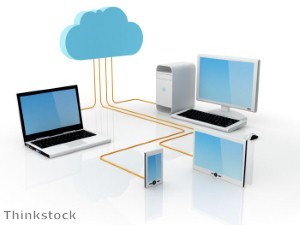David Roe | Cmswire
There have been numerous reports over the years on how cloud computing has developed, how businesses are taking to it, and how it is being used in the home. However, little enough research has been done to assess what vendors think about it. A new report aims to remedy that.

Produced by IT Channel Insight, The Cloud Leaders’ Report 2012 pulls together the results of a number of interviews done with some of the players that are currently shaping the cloud computing industry.
Those that were consulted for this report include: Asigra, Axcient, CA Technologies, Citrix, Dell, Google, HP, IBM, Microsoft, Rackspace, Red Hat, Salesforce, Shoretel, StorageCraft, Symantec and VMware.
In fact, just about anyone who is anyone in a computing space that Gartner estimates will be worth US$ 206 billion in spending in 2016, up 41% from current levels.
Cloud Computing Market
So what does the report say? The first thing of note is that the market is currently made up of a mix of start-ups and large vendors that are currently shifting some of their business to cloud computing. Nothing new in that, but what is surprising is that the vast majority (81%) of vendors interviewed recommended hybrid deployments consisting of a mixture of on-premises and cloud solutions. Enterprises, they say, should not move everything to the cloud.
From this, the report authors conclude that vendors see the cloud as an addition to their on-premises portfolios, rather than a replacement for it.
Another interpretation of that, however, is that the cloud has still to be really tested and until such a point as it has, it would be risky for enterprises to put everything in the cloud, a strategy that most enterprises appear to be adopting anyway. And while there are a number of advantages in moving from on-premises solutions to cloud solutions for enterprises, there are also advantages for vendors too.
By moving from selling on-premises to cloud services vendors receive a smaller recompense initially, but over the course of a contract lifetime, it is generally accepted that long term contracts with cloud vendors cost more than the price of on-premises applications. They also offer the distinct advantage of offering guaranteed revenue over the lifetime of a contract with predictable revenue streams that make financial projections a lot easier.
A final advantage for vendors is that the barrier for entry is much lower. By that it means that the financial entry point for clients to buy into cloud products is much lower than it is for on-premises vendors, giving the vendor access to a much wider customer base.
Cloud Computing Today
According to the report, we are at a key point in the history of cloud computing. There are there main shifts in business and cloud computing that are dovetailing at the moment:
- Business are changing in ways that fit well with cloud computing
- Cloud computing, while still developing, has reached maturity
- Cloud computing is now driving business innovation
Vendors are using the functional, financial and operational and efficiency advantages to see into where businesses are the moment, and shaping them to target particular needs of clients. In particular, they are enabling businesses to become leaner by:
- Enabling scalability: Most cloud solutions enable businesses to scale up and down according to need with many offering pay-per-use schemes.
- Capital costs: Most companies are willing to go with solutions that provide plug and play solutions with no upfront capital expenses. The most frequently cited financial benefit cited is that it allows businesses to shift capital expenses to operational expenses. It also enables access to more sophisticated and expensive technologies.
- Mobility and agility: Cloud computing enables workers access their work anywhere and anytime and, to a large degree, on any device. The cloud is facilitating this shift the way workers are working.
IT Departments
IT departments, whether they like it or not, are being forced to deal with cloud computing and change as cloud computing develops. Those changes include:
- Cloud confidence: The report says that businesses appear to have overcome initial caution around the cloud and are increasingly putting their faith in cloud-based solutions. Connectivity is no longer an issue inside the developed world, so the only hurdle was belief in cloud computing, and that, it seems, has come.
- Mobility: IT departments have had to change as businesses are becoming increasingly mobile and depending on access from anywhere, any time and any device. This has created a set of problems around security and compliance that needs to be addressed by cloud-based solutions.
- Ownership v User: By this, it means that companies are moving to a mindset where they no longer own technology, but only use it, hiring it from someone else. IT has had to follow, with vendors increasingly selling to lines of business and users, rather than IT departments.
Changes in computing
Cloud computing is also changing computing too with the commoditization of Infrastructure-as-a-Service, the main driver in speeding up this change. In practical terms this means that virtualization and cloud-management capabilities have become two of the main drivers of change, with the drop in the cost of cloud storage pushing this forward too.












